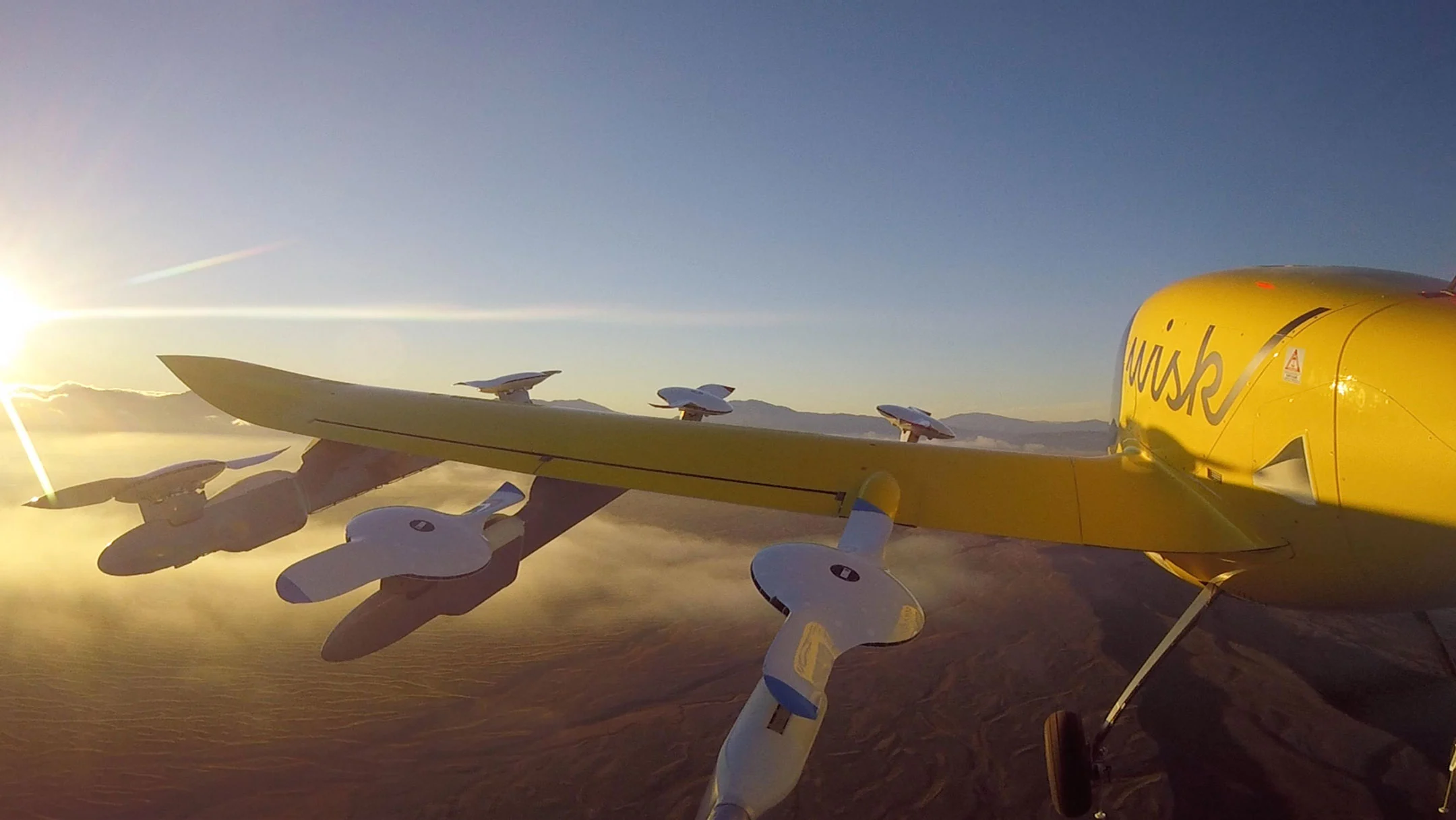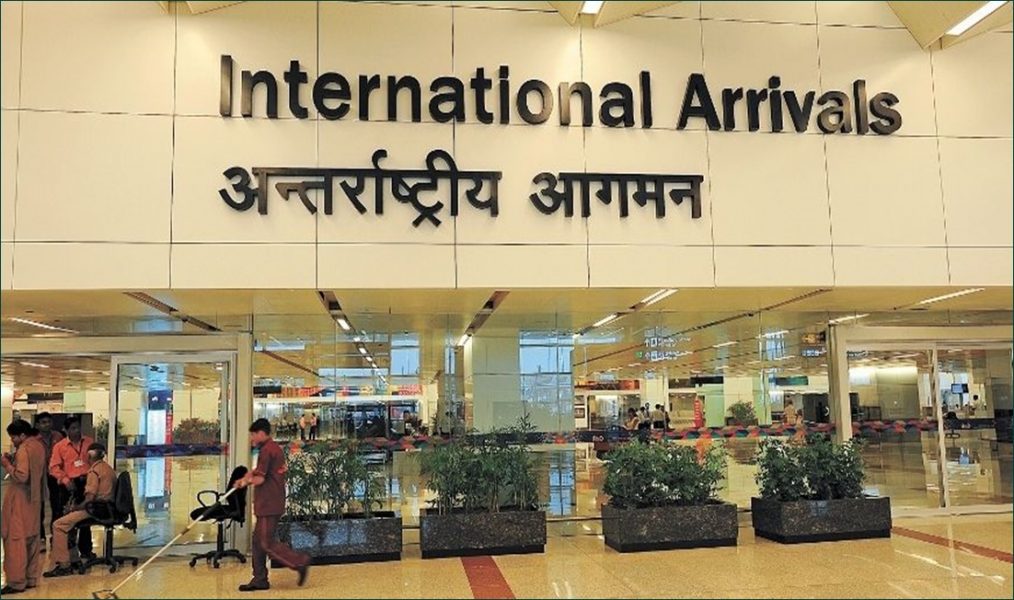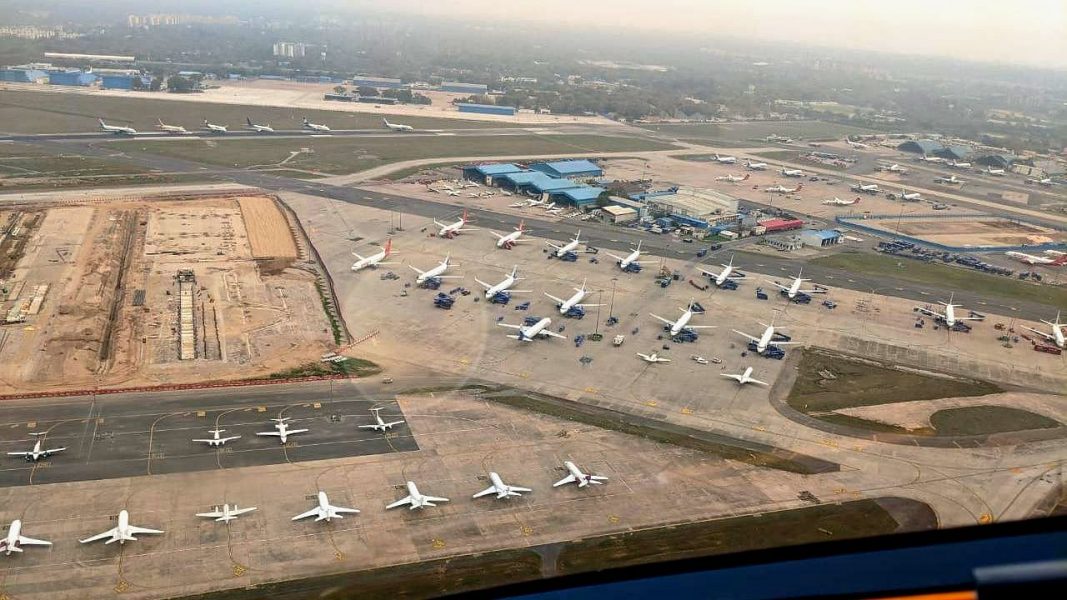Wisk Aero continues to expand its global footprint - launches a new engineering hub in Montreal
Prashant-prabhakar
10 Aug 2022

Wisk Aero, one of the leading Advanced Air Mobility (AAM) company and developer of the first all-electric, self-flying air taxi in the U.S, is continuing its global expansion with the launch of a new engineering hub in Montreal, Canada. Reportedly, the hub will be dedicated to the ongoing development of its 6th generation aircraft slated to be revealed later this year.
The company is planning the launch of the new hub with existing Montreal-based personnel and intends to grow this presence to approximately thirty employees by the end of the year.
The start-up company has been experiencing rapid growth, driven by a tremendous increase in interest in its mission and technology and the Montreal hub is touted to be a part of a broader effort to further expand its global team of industry-leading talent around the world.
We are excited about the launch of our new Montreal hub. Canada’s forward-looking approach to aviation and interest in AAM, combined with its pool of experienced aerospace talent, make it an ideal location for Wisk as we expand our global footprint. This expansion highlights the increasing global interest in our mission to bring safe, everyday flight to everyone, and we look forward to continuing that mission with support from our new Montreal-based hubsaid Sebastien Vigneron, Sr. Vice President of Engineering and Programs
Tech and specs
eVTOL
Mission Air taxiPowerAll-electricAircraft typeExperimentalAircraft classificationeVTOLType of flightFixed wing, on a single propellerPilot typeAutonomous (self-flying)Altitude~1500-5000 ft AGLDimensions21 feet long with a 36-foot wingspanVertical lift12 independent lift fansRange Initially about 25 miles plus reserves / about 40 kilometres plus reservesSpeedAbout 100 miles per hour / about 160 kilometres per hourWisk Aero
Here's a brief timeline of the developments at Wisk Aero so far:
First Generation - February 2014
From hover to forwarding flight, Wisk pulls off its first generation aircraft.
Second Generation - June 2015
The second generation of aircraft completes the world's maiden flight of a manned, all-electric, fly-by-wire aircraft.
Third Generation - August 2016
Completes its first eVTOL flight with full hover and vertical take-off and landing.
https://www.youtube.com/watch?v=-fM7GV84Rf8
October 2017
Wisk expands its existing California-based flight testing centre while at the same time also expanding its presence in New Zealand.
Fourth Generation - November 2017
Their fourth generation aircraft completes its first unmanned transition in California.
Fifth Generation - March 2018
The company unveils "Cora"- its fifth generation, electric, autonomous air taxi.
Wisk Aero
Partnership with Air New Zealand - October 2018
Partners with Air New Zealand in what could be termed as one of the world's first UAM partnerships.
Boeing joins as an investor - June 2019
Boeing, one of the world's largest aerospace behemoths, hops in as an investor and strategic partner.
ALSO READ - Boeing increases its investment in Wisk Aero by USD 450 million
Partnership with the New Zealand Government
Partners with the New Zealand government in their world-first Airspace Integration Trials
The announcement of the new Montreal hub follows Wisk’s recent expansion into Australia. In addition to Montreal and its headquarters and facilities around the San Francisco Bay Area, Wisk now has a presence in Atlanta (Georgia), New Zealand, and Australia.
https://www.youtube.com/watch?v=b8q3dgQmCS4
About Wisk
Wisk is an advanced air mobility (AAM) company dedicated to delivering safe, everyday flights for everyone. Wisk’s self-flying, eVTOL (electric vertical takeoff and landing) air taxi, will make it possible for passengers to skip the traffic and get to their destination faster.
Headquartered in the San Francisco Bay Area with locations around the world, Wisk is an independent company backed by The Boeing Company and Kitty Hawk Corporation. With over a decade of experience and over 1550 test flights, Wisk is shaping the future of daily commutes and urban travel, safely and sustainably.
SOURCE(s)
COVER: DroneDJ
Read next
Aircraft operators and airlines will now have to furnish all travel-related information including date of travel, credit card details, and baggage information about passengers who are going to travel in and out of India at least 24 hours before their flight departure.
Non-adherence to these rules will attract a penalty between INR 25,000 - 50,000 for each act of non-compliance.
The Central Board of Indirect Taxes and Customs notified the Passengers Name Record Information Regulations 2022 that mandate aircraft operators to share certain information with the National Customs Targeting Centre-Passenger (NCTC-P). It will conduct a risk analysis of passengers.
Details needed for passengers travelling in and out of India.
Officials said that the customs department will use the data for improved surveillance and risk assessment of flyers. This data will also help the law enforcement agencies in India or any other country.
With this, India joins a list of over 60 countries, including the US, that has regulations on sharing prior information with Customs and border control authorities.
The objective is to collect advanced information on passengers for better risk profiling. Immigration data is available only after the arrival or departure of passengers.
Regulation in line with international best practices.
Airline officials said the move creates a standardised process of passenger data sharing with the Customs department, given that non-standard requests for passenger data could potentially lead to privacy infringements.
At present, airlines are required to share passenger information limited to name, nationality and passport details in advance with the immigration authorities.
While the regulation did not state the reason for seeking such information, analysts said this was to prevent bank loan defaulters from fleeing the country to avoid prosecution.
Experts say though the intent is to prevent any offence, the passenger details are sensitive information and the government needs to protect the privacy of such data, which is susceptible to misuse.
Read next
Delhi Airport’s fourth runway will be operational by the early next year. Airports Authority of India (AAI) chairman Sanjeev Kumar said that instrument landing system installation and other work like painting runway markings and calibration will be completed by this December.
“The fourth runway should get operational by early 2023,” he said. IGIA will be the only Indian airport to have four runways.
The new runway is 4,400 metres long and 75 metres wide. The third runway 29/11, which runs parallel to the fourth, is a bit bigger. The fourth runway is expected to ease the pressure of a likely rise in flight operations.
Delhi Airport’s fourth runway will be operational by early 2023. (Image Credit - Saurabh Sinha)
ALSO READ - DIAL claims that Delhi Airport will be a net zero carbon emitter by 2030
Once commissioned, the fourth runway would handle the increased traffic movement and help reduce carbon emissions. The Delhi airport would become the first airport in India to have four operational runways.
Delhi International Airport Ltd (DIAL) recently got a capacity study conducted by the UK-based air traffic management firm, NATS, that showed its four runways can fly in and out as many as 14 crore passengers annually — more than double the 6.9 crore international-cum-domestic (both arrival and departure) numbers in the last pre-pandemic year of 2019.
ALSO READ - Elevated cross taxiway at Delhi Airport, India’s first, to be ready soon
The Delhi airport would become the first airport in India to have four operational runways.
However, reaching the 14-crore figure will require air traffic management techniques to safely handle more planes by reducing their separation and many other technical methods.
While many airports are getting privatised, the state-owned AAI provides air navigation services at all airports and manages traffic in the Indian airspace. With an increase in air traffic and new airports across the country, there is a shortage of air traffic controllers (ATCOs).
ALSO READ - Shortage of Air Traffic Controllers widens
“Given the kind of traffic IGIA — India’s busiest airport — handles, we need experienced ATCOs. We are seeing many of them getting transferred to other places from Delhi and that could have its impact on operations here,” said senior ATCOs.
With an increase in air traffic and new airports across the country, there is a shortage of air traffic controllers (ATCOs).
Kumar said there were concrete plans to have more ATCOs and upgrade the air traffic control (ATC) systems across India. AAI had issued an ad to recruit 400 ATCOs this year, and 300 who joined last year would be in the system in 2022 after completing the training. An additional 320 will be hired in 2023.
“We have drawn up a 10-year plan to increase ATC capacity by replacing old equipment and upgrading them across India. As of now, AAI spends INR 600-700 crore annually on air navigation systems. This will be upped to INR 1,000 crore.Cumulatively, about 1,000 ATCOs would have come onboard in three years. We have also sent a proposal to create posts for 452 more to the aviation ministry. Our focus is on increasing ATCOs and modernising systems to handle more flights safely."Sanjeev Kumar, Chairman, Airports Authority of India (AAI)
Post-Omicron, the air traffic between non-metro and non-metros/metros has picked up better than the traffic between metros, said Kumar. “We have seen a very strong recovery in places like Jammu, Leh and Srinagar.”
(With Inputs from The Times of India)
Read next
The Boeing 737-800 aircraft of SpiceJet carrying 195 passengers encountered severe turbulence due to the thunderstorm, on its way to Durgapur from Mumbai on May 1.
Investigation into the incident was handed over to the AAIB, as it was classified as an accident due to passengers sustaining serious injuries. Out of the 14 passengers and three cabin crew who sustained injuries, two had severe injuries to their spine and shoulder and had been admitted to ICU.
The Aircraft Accident Investigation Board (AAIB), investigates aircraft accidents and is a division of the Ministry of Civil Aviation.
The Aircraft Accident Investigation Board (AAIB) took over the probe into severe turbulence on a SpiceJet flight that left people injured, even as experts blamed inclement weather for the incident and called for the investigation to ascertain the crew’s response to it.
The investigation also found that SpiceJet’s maintenance control centre (MCC) was aware of the reliability issue of the radar.
"The pilot deviated to his left in order to avoid turbulence but did not get alerted about the upcoming issue in his deviated path. The two operating pilots acted on the information on the weather pattern in the first instance, they weren’t aware of the air pocket that caused the turbulence after deviating from the path."SpiceJet official
The turbulence that is hard to detect is called ‘clear air turbulence’ because it presents without other indicators. Not all turbulence can be forecasted or seen in advance. This incident highlights the necessity of wearing your seatbelt at all times, especially during critical phases of flight.
The Mumbai-Durgapur SpiceJet flight encountered severe turbulence during its descent phase.
According to the preliminary investigation report, on April 30, pilots of the aircraft, VT-SLH, while operating from Delhi to Kolkata, found that the radar was not depicting the weather correctly. Following the landing at Kolkata, the commander of the aircraft made an entry of the issue in the pilot defect report (PDR).
ALSO READ - Spicejet mid-air turbulence – here’s what is known so far
While the aircraft operated on four other sectors the next day, it faced inclement weather conditions during its last flight over Durgapur. At least three other flights that were routed to fly over the same region on that day deviated and opted for longer routings to avoid the storm, while the SpiceJet aircraft flew straight into it.
According to the preliminary investigation report, on April 30, pilots of the aircraft, VT-SLH, while operating from Delhi to Kolkata, found that the radar was not depicting the weather correctly.
A maintenance engineer in Mumbai informed the Maintenance Control Centre (MCC) about the snag. The engineer was told that they were aware of the reliability issue and that there was a shortage of high-cost spares like weather radar, according to the draft report.
As per instruction from the MCC, he then carried out an operational check and found the weather radar patterns satisfactory and informed the MCC to monitor the aircraft further, the report added.
India’s aviation regulator DGCA has launched an inspection on the entire SpiceJet aircraft fleet after the incident. It has also taken off the roster of the flight’s crew, aircraft maintenance engineer (AME) and in charge of SpiceJet’s maintenance control centre pending a probe.
(With Inputs from The Economic Times)
Read next
After launching expressway projects worth almost Rs 1 trillion, the Uttar Pradesh government is now betting big on the aviation sector to propel the state’s economic growth.
Air travel, comprising both business and leisure, is expected to give a fillip to the socioeconomic landscape by attracting fresh investment. It would also ramp up infrastructure and create jobs.
Helitaxi service will also help in giving tourism a boost in these cities.
The Yogi Adityanath government is facilitating the development of big-ticket airports, including the international aviation hub at Jewar in Greater Noida. It is also setting up heliports at major tourist hotspots like Agra, Mathura and Lucknow.
ALSO READ - Jewar Airport has the potential to make Noida what Delhi Airport made Gurgaon
The heliports projects, to be developed under the public-private partnership (PPP) model, will be awarded to operators after competitive bidding. The heliport services are slated to be launched in all major religious and ecotourism hubs across the state.
Five companies have already been shortlisted by the UP tourism department. The five companies are Fly Blade India, Rajas Adventure, Oasis, Shaurya Aeronautics and Shirisha Technologies. Fly Blade operates air services in Shirdi (Maharashtra) and Rajas Adventure operates seaplanes in Gujarat.
This initiative is being taken to reduce traffic congestion on roads.
“The financial bids of these companies will soon be opened before the proposal is sent to the state cabinet for approval,” a state government official said.
The heliport services are slated to be launched in all major religious and ecotourism hubs across the state. During this period, the state saw the arrival of nearly 1.25 billion domestic and 12.5 million foreign backpackers.
The government is bullish on aviation’s potential, considering that inward tourist flow to UP surged nearly 27 per cent in the last five years. During this period, the state saw the arrival of nearly 1.25 billion domestic and 12.5 million foreign backpackers.
Major heliports to be set up in Uttar Pradesh to operate copter taxis
In 2018, the UP government promulgated a new tourism policy, which so far has fetched 1,084 tourism development projects worth Rs 3,000 crore. Several tourism projects were also launched at the third ground-breaking ceremony in Lucknow on June 3, 2022.
"The tourism and hospitality sector is witnessing a rapid recovery in the post-Covid scenario. It is leading to a spurt in demand for hotel rooms and allied hospitality services." An Official said.
Terming UP as the driving force of new India, Prime Minister Narendra Modi, on the occasion, launched projects worth Rs 80,000 crore across different sectors, including infra and tourism.
Earlier, projects worth Rs 1.25 trillion had already been launched at the previous two ground-breaking ceremonies. The Adityanath government 1.0 (2017-22) had garnered investment proposals totalling Rs 4.68 trillion at the 2018 Investor Summit.
(With Inputs from Business Standard)
Read next
A bomb threat, which turned out to be a hoax, delayed an IndiGo flight at Kempegowda International Airport on Sunday, August 7 night. The passengers on board the Indigo flight from Jaipur to Bengaluru were finally allowed to leave their flight at 2 AM Monday, August 8.
IndiGo flight 6E 556 from Jaipur to Bengaluru carrying 175 passengers had an emergency on Sunday night before it could land at Kempegowda International Airport after an anonymous message citing a bomb on board the flight was found scrawled on a tissue paper in a toilet.
The threat note was found scrawled on tissue paper in a toilet.
The message that was written in Hindi on tissue paper was found by a cabin crew member in the rear toilet who said, "Land na karna, Is flight mai bomb hai" (Do not land, there is a bomb in this flight). The staff who spotted the bomb threat message alerted the cockpit crew who then contacted the Central Industrial Security Force (CISF) and the Air Traffic Control unit.
The Flight Captain contacted the security agencies at KIA and landed the flight after receiving clearance. The flight landed after 9:30 pm and it was taken to an isolated bay.
Hoax bomb threat on IndiGo flight
The Bomb Disposal and Detection squad, dog squad and CISF carried out massive checks. All the passengers were double checked and handwriting samples were collected from everyone. The baggage of all flyers were isolated and individual checks carried out.
The samples of suspected passengers have been sent to the Forensics Science Lab for examination. The possibility that someone else could have written it and the tissue merely left behind by a passenger inside the toilet was also being explored.
''As a precautionary measure, the aircraft was taken to a remote bay and the bomb threat process was initiated. A standby aircraft was arranged for the passengers to avoid further delay and inconvenience.''IndiGo said in a statement.
The threat was declared a hoax after the bomb squad, canine squad and personnel of the CISF probed and gave the clearance.
ALSO READ - IndiGo aircraft halted at Patna airport after hoax bomb call





Comment